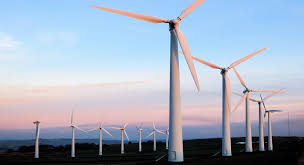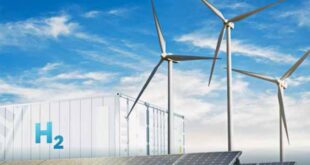According to the Energy and Climate Intelligence Unit (ECIU), in the period October 2021 to April 2023, windfarms are expected to pay back £660M as their contracted prices are much lower than the current wholesale cost of electricity, which has been driven up by the gas crisis.
The final saving is likely to be higher with the Russian invasion pushing gas prices up and likely prolonging the crisis.
With more, even cheaper windfarms coming online this year and in future years, if a gas crisis were to reoccur in five years, wind could be paying back £6.7Bn in a year, equivalent to £85/home, analysis from the ECIU finds.
“Many are predicting gas prices to stay high for several years, but even if wholesale prices returned to £50 per MWh (in 2021 prices), several of the new wind projects coming online would still be paying back,” said the ECIU.
“Once the UK reaches its target of 40 GW of offshore wind by 2030, alongside further onshore wind development, if the gas crisis was to be repeated, this figure could jump to £26Bn, equivalent to £330/home.
These paybacks come through the contract for difference (CfD) scheme which provides a fixed price – known as the ‘strike price’ to renewables that have started operating since 2017. It has been so successful that Government recently increased the frequency of CfD auctions to be every year.
With wind generators set to continue making payments into early 2023, the CfD ‘green levy’ on bills has been set to effectively zero, so that customers will not be paying for CfD windfarm contracts under the next price control.
Currently, the CfD levy cannot be set to be negative – but once through this immediate crisis, Government could consider changing the legislation so that households can essentially receive payments from cheap windfarms, the ECIU said.
ECIU head of analysis Dr Simon Cran-McGreehin said, “Even though green levies are falling and are dwarfed by the cost of gas on bills, there is valid debate as to whether these costs should be transferred to general taxation.
“It is worth considering though this would mean any wind paybacks in future go to the Treasury and not potentially into people’s pockets.
“Scroll forwards to more, even cheaper wind farms being built under the net zero target and there is a potential wind windfall of £26Bn in a future gas crisis.”
All-Party Parliamentary Group on Renewable and Sustainable Energy chair Bim Afolami MP said, “Wind energy is cost effective, clean and is providing an economic shot in the arm for everyone supplied with renewable energy to power their homes and businesses.
“We need to usher in more wind power capacity to keep prices low and protect ourselves from volatile global gas prices and Russian gameplaying with our energy security.
“Through competitive auctions, the fixed price for electricity is locked in and the CfD scheme will enable investment to finance wind projects and all under our mission to decarbonise our energy supply to net zero.”
Six major offshore windfarms are contracted to come online over the next few years providing further paybacks via CfDs.
The ECIU said the first two will be the Moray East offshore windfarm off northeast Scotland, which is coming online by April 2022, which could pay back the equivalent of £6.50/home per year during a gas crisis; and Triton Knoll, off the Lincolnshire coast, which is coming online by April 2023, and could pay back the equivalent of £5/home per year during a gas crisis.

 Iran Energy News Oil, Gas, Petrochemical and Energy Field Specialized Channel
Iran Energy News Oil, Gas, Petrochemical and Energy Field Specialized Channel



